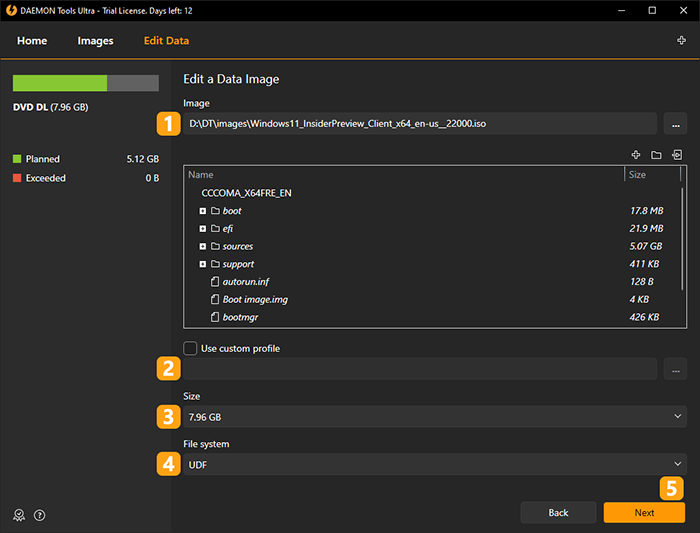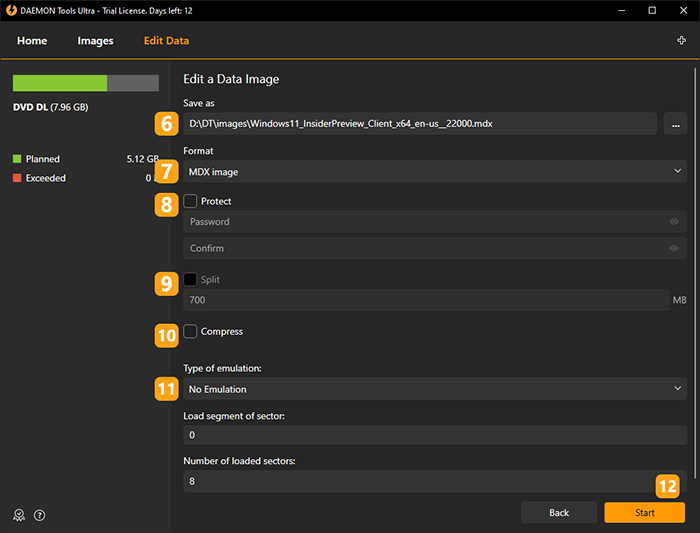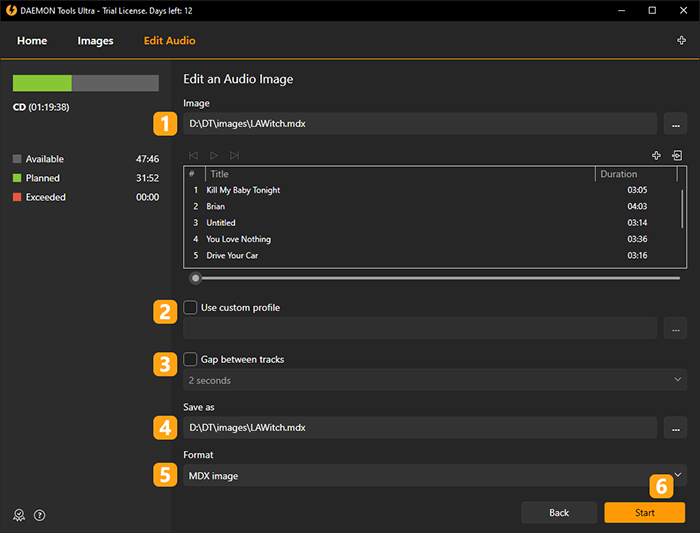Edit an Image wizard allows you to adjust the data and the settings of the previously created or downloaded image.
To edit an image, choose it from Images catalog and click Edit… option from its contextual menu. Or, enter Edit... to the field in the main window and pick the right option, or click the Edit tile and pick the needed image type.
Edit an Image wizard differs depending on the type of the disc. If you are editing a data image, then:

- Choose an image to rearrange or change the list of the files. Use the contextual menu and Add Files, Create Folder, Import From Image icons to simplify this process. Also, you can create a boot image if there are one or several bootable files among the added ones. Bootable files are displayed in blue color. To make certain file a bootable one, go to its contextual menu and choose Boot Image option. In this case you will be able to adjust its options on the next step.
- If you have a ready Template, you can choose and Use custom profile.
- Choose the Size of the virtual disc.
- Select the file system you prefer.
-
Click Next button to switch to the second page of settings.

-
Enter the path and the name of the new image file. Use Browse... button to simplify this process.
- Choose the Format of the future image (MDX, MDS/MDF or Standard ISO). Note that some other options depend on the image format.
- Check Protect option in order to set the password. Then you will need to enter your password and confirm it.
- Check Split option in order to divide an image in volumes. Most often this option is used to create several volumes of image file and burn them on CDs or DVDs. After checking this option, you will be able to redefine the size of the volume.
- Check Compress option in order to reduce the size of the image.
- If you have bootable files, then here you will be able to adjust their settings:
- The type of emulation option has several alternatives. Choose No Emulation option if you want the bootable image to be loaded into memory. If you mount an image with Floppy Emulation type, special virtual A: drive will be created for it. Note that the size of bootable files needs to be smaller than the size of virtual floppy. If you choose Hard Drive Emulation option, virtual C: drive will be created for your image.
- Load segment of sector option defines the initial segment. 7C0 is a traditional segment that is equal to zero.
- Number of loaded sectors is a quantity of virtual sectors that will be saved at Load Segment during the boot process.
- Click Start button to begin editing an image or Back button to the previous page with basic settings.
If you are editing an Audio CD image, then:

- Change or rearrange the audio tracks of the image. Use Add Files and Import From Image icons to fill the list and the contextual menu to rearrange the tracks. Also, you can listen to added files using simple audio player embedded to DAEMON Tools Ultra.
- If you have a ready Template, you can choose and Use custom profile.
- Check Gap between tracks option and choose the needed interval if you want to add spaces between audio files.
- Choose the name and the path for the image.
- Choose the Format of the future image (MDX, MDS/MDF or Standard ISO).
- Click Start button to begin editing an image or Back button to return to Images.